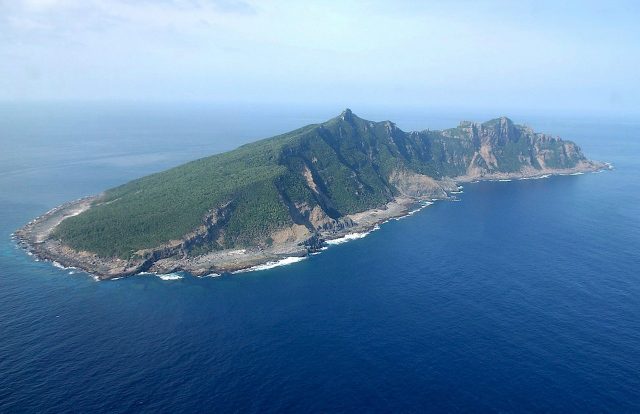SUMMARY
This is AI generated summarization, which may have errors. For context, always refer to the full article.

WASHINGTON DC, USA – China is using “coercive tactics” and fostering regional tensions as it expands its maritime presence in the South China Sea and elsewhere, but is avoiding triggering an armed conflict, the Pentagon said Friday, May 13.
In an annual report to Congress, the Defense Department outlined China’s rapid military growth and described how it is assertively defending sovereignty claims across the contested East China Sea and South China Sea.
Last year for instance, China deployed coast guard and PLA Navy ships in the South China Sea to maintain a “near-continuous” presence there.
And in the East China Sea, Beijing deployed planes and maritime law-enforcement ships to patrol near a chain of islands known as Senkaku in Japanese and Diaoyu in Chinese.
“China is using coercive tactics… to advance their interests in ways that are calculated to fall below the threshold of provoking conflict,” the report states.
When asked to describe China’s coercive tactics, Abraham Denmark, a deputy assistant secretary of defense for East Asia, told reporters that Chinese coast guard and fishing vessels sometimes act in an “unprofessional” manner.
They do so “in the vicinity of the military forces or fishing vessels of other countries in a way that’s designed to attempt to establish a degree of control around disputed features,” Denmark told reporters.
“These activities are designed to stay below the threshold of conflict, but gradually demonstrate and assert claims that other countries dispute,” he added.
China claims nearly all of the strategically vital South China Sea, even waters close to Southeast Asian neighbors including Vietnam, the Philippines, Malaysia and Brunei, which have competing claims. (READ: FAST FACTS: South China Sea, a decades-long source of tension)
3,200 acres of new land
Central to China’s claims are its land-reclamation efforts that have seen tiny islets, reefs and other maritime features built into military facilities.
The Pentagon report included dramatic photos of these contentious islands, including the Fiery Cross Reef Outpost, located between the Philippines and Vietnam.
Since 2014, China has turned a sandy blip in the ocean into an island stretching more than two miles (3 kilometers,) complete with a lengthy runway.
China’s land reclamation efforts in an area known as the Spratly Islands have added 3,200 acres (1,295 hectares) of land to the 7 features it occupies, the report states.
Beijing last year paused land-reclamation efforts and began focusing on “infrastructure development” of the islets.
The United States insists China’s claims have no basis under international law, and the US military has conducted several “freedom of navigation” operations, where ships and planes pass close to the sites claimed by China.
Such missions have drawn howls of anger from Beijing, which accuses the United States of provocation and of increasing the risk of a military mishap.
The US Navy maintains a strong presence in the South China Sea, and Defense Secretary Ashton Carter has twice in recent months pointedly visited US aircraft carriers deployed in the waterway.
“Recent land reclamation activity has little legal effect, but will support China’s ability to sustain longer patrols in the South China Sea,” the report notes.
Rapidly evolving military
China’s ambitions extend far beyond its immediate region. In November, Beijing announced it was establishing a military facility in Djibouti.
This “likely reflects (a) more global outlook, as it will be utilized to sustain the PLA Navy’s operations at greater distances from China,” the report notes.
Additionally, China is “expanding its access to foreign ports to pre-position the necessary logistics support to regularize and sustain deployments in the ‘far seas.'”
China has the second-largest military budget after the United States, and over the past two decades has increased spending annually. (READ: Q and A: Is South China Sea now a superpowers’ battleground)
In 2015, its official military budget was $144 billion, though the true number is thought to be even higher. The Pentagon’s 2016 budget is about $585 billion.
Much of China’s military money is going towards the development of its conventionally armed missile capability, “as well as ground- and air-launched land-attack cruise missiles, special operations forces, and cyber warfare capabilities to hold targets at risk throughout the region,” the report states.
While critical of some of China’s military tactics, the Pentagon said it hopes to continue building a “sustained and substantive” military-to-military relationship with China.
The United States “will continue to focus on enhancing risk-reduction measures that diminish the potential for incidents or miscalculation, and encourage China to contribute constructively to efforts to maintain peace and stability.” – Thomas Watkins, AFP/Rappler.com
Add a comment
How does this make you feel?
There are no comments yet. Add your comment to start the conversation.